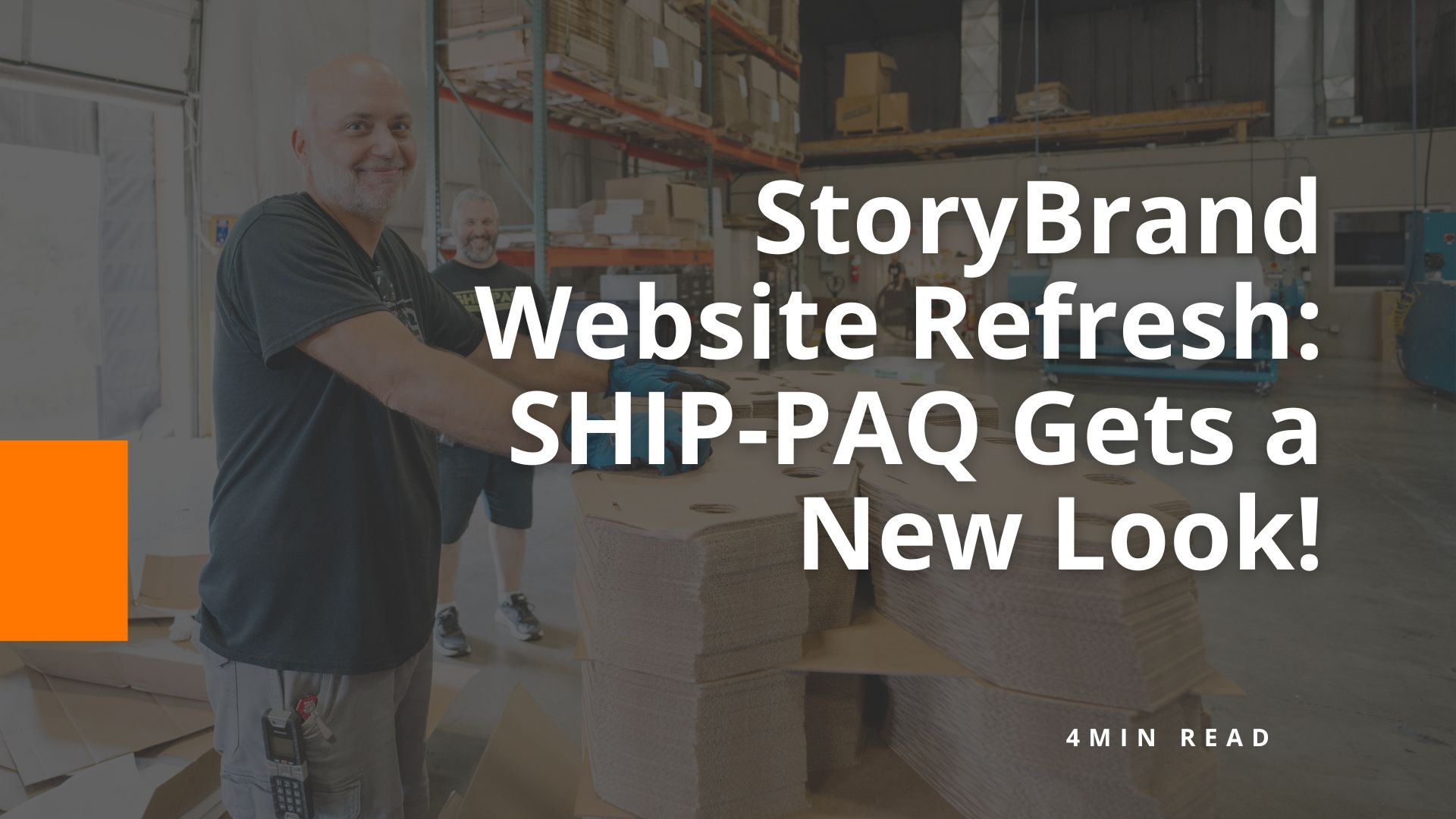Using HARO For Link Building for MSP Marketing

Link building is an important tactic for improving your website’s overall SEO. Authentic backlinks from other sites to yours lend your site credibility and provide a way for readers to access your site directly. I recently interviewed Dave Hatter, of Intrust IT, on his experience using the free Help A Reporter Out (HARO) platform to boost Intrust’s link building campaign and the company’s brand online. Dave’s been using HARO for over 10 years and is happy to share his strategy.
What is HARO?
HARO is a free service that connects content creators with journalists seeking insight from subject matter experts. Owned by Cision, a global leader in PR, marketing communications technology and intelligence, it boasts over one million sources and 75,000 journalists using it to connect and share knowledge. HARO makes it easy for experts to weigh in on topics they are passionate about.
How do you use HARO?
The HARO setup is simple yet effective. The way you interact with the site depends on whether you are a journalist or a source.
HARO for Journalists
There are three simple steps to using HARO as a journalist. The first is to sign up on helpareporter.com. Select your account type, reporter, and provide your name, contact information and media outlet. Some information will be shared with site users, like your name, but your email will be masked. The second step is to submit a free source request. Simply create a brief synopsis of your story, required qualifications for sources and a deadline you would like information back by. The HARO editorial team will take over from there. They will send any and all relevant pitches straight to your HARO account and inbox. You get to decide which source or sources to use and can reach out for additional information from them to include in your story.
HARO for Sources
There are also three simple steps to use HARO as a source. The first is to create an account with HARO, signing up as a “source” on the registration page. Part of the process includes selecting which type of requests you want to be sent. HARO category preferences include:
- Master HARO
- High Tech
- Energy and Green Tech
- Sports
- Public Policy and Government
- General
- Travel
- Business and Finance
- Biotech and Healthcare
- Lifestyle and Fitness
- Entertainment and Media
- Education
The second step is to monitor source requests in your inbox. Emails are sent three times a day, per category. They come around 5:35 a.m., 12:35 p.m. and 5:35 p.m. ET Monday through Friday. Once you find the perfect request, the third step is to respond. Reply to the email address listed in the source request with the best pitch you can write. Answer the questions asked and provide additional information as requested, including contact information. If the journalist wants to engage in further dialogue, they’ll reach out.
As a source, Dave checks HARO through the three daily emails. He looks for topics that align with his knowledge and passion and responds roughly three times a week on average, although he may not respond for weeks depending on the specific pitches. The time it takes to respond varies depending on the ask and Dave has a “response template” he can start with and tailor to each journalist’s request to save time. Each source can decide how much effort to put into any request.
What is the Benefit of HARO?
HARO is a great tool for link building, which in turn boosts your SEO. Being quoted in relevant publications with your company website address included will allow you and your business to gain recognition as an industry expert and thought leader. It can also provide increased website visits and even leads.
HARO helps you build your brand. Once you have success using HARO in making connections with media sources, they may start directly reaching out to you. Dave Hatter had success in this aspect; he is now a resident tech expert for Local 12 television. You become an influencer in your industry; Dave gets additional social comments and DMs on Twitter.
If your pitch is picked up, it may also provide FREE TV spots and radio clips, which make great impressions with the public. As a source, the only cost of HARO is the time it takes to reply to an email.
“I’ve been quoted in more than 30 publications including The Wall Street Journal, MSNBC, Salon, Reader’s Digest, Business Insider, The Street, The Ladders, Dice.com, InfoWorld, ComputerWorld, CIO, CSO, CIO Update, Search CIO, Digital Trends, Tech Beacon, CyberNews, Lifewire and GearBrain” – Dave Hatter
Ultimately, HARO provides the opportunity to share useful information for public good.
How often do your submissions get picked up? Any tips for getting picked up?
There is no guarantee that a reporter will accept your pitch. Dave estimates that his pitches are picked up 10 to 30 percent of the time. His advice for getting picked up is to respond to exactly what the reporter asked for and to do so as quickly as possible. Copy the query and respond to each topic accordingly. His other advice is to look at HARO emails frequently. Some requests have deadlines the next day, while others are sent weeks before the deadline. The faster you reply, the greater the chance a reporter will choose you as a subject matter expert. Including a list of credentials, a short bio, a LinkedIn profile link, a direct phone number, the promise to reshare the article, and list of certifications has helped Dave find great success using HARO. He can easily copy and paste his template then customize the reply for each pitch.
What is the best way to start using HARO?
The first step in using HARO is appointing a person within the company to run with it and be that personality. It should be someone who will consistently check their emails and has the knowledge to accurately respond to the requests; you can also outsource this responsibility to your marketing agency. The appointed person should be ready to respond quickly and be comfortable presenting in any format, whether it’s live with a microphone or recorded on TV.
Dave’s advice is to not get discouraged if your pitches don’t get picked up right away. Continue to submit responses and your brand and credibility will start to grow; persistence pays.
In addition to HARO opportunities, creating original content on your business’s own website is a great way to build credibility on search engines through link building and attract potential customers. BigOrange Marketing, for example, manages a consistent content calendar for all of our clients so they publish relevant articles at set times throughout each month.
“Appoint someone at your company to dedicate time each week to respond to HARO requests. BigOrange supplies us with relevant and timely content, which makes it easy for us to engage with the media and point them back to our site.” – Dave Hatter.


Are you ready to add backlinks to your site and build your brand for free? Schedule a free 30-minute consultation with me to learn more about our link-building campaign tactics.
Share the knowledge
IT Service Marketing: A Checklist for MSPs
Effective marketing helps your business stand out, especially for managed service providers (MSPs). When you take a strategic approach you’ll build brand awareness, establish trust…
Explore this TopicJoin Us at Channel Program Local Dinner in Columbus
The big squeeze, aka our CEO, Margee Moore, will be attending Channel Program Local Dinner in Columbus, Ohio! The Channel Program sponsors the event, which…
Explore this TopicGoogle Business Profile Optimization Tips: Key Takeaways From Our Webinar
A well-optimized Google Business Profile (GBP) is vital for improving your local search rankings and increasing visibility on Google Maps. It was formerly known as…
Explore this TopicLandscape Marketing Ideas: Keywords for Landscaping
A strong online presence begins with strategic keyword usage. Keywords are the foundation of search engine optimization (SEO), helping your business appear in search results…
Explore this Topic5 Fundamentals of Inbound Marketing for MSPs
As a managed service provider (MSP), your expertise lies in keeping IT systems running smoothly. But when it comes to marketing, it can feel like…
Explore this TopicMichigan Economic Growth Institute Forum: Learn How to Tell Your Story
By using the seven timeless and universal elements of storytelling, businesses and organizations can reach new audiences. Discovering the power of StoryBrand will be the…
Explore this TopicStoryBrand Website Refresh Positions Shipping Supplies Source for Growth
Our client, SHIP-PAQ, recently received a StoryBrand website refresh and we’re thrilled to announce the launch of their new design. As a trusted shipping supplies…
Explore this Topic









